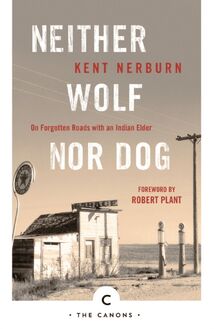-
 Univers
Univers
-
 Ebooks
Ebooks
-
 Livres audio
Livres audio
-
 Presse
Presse
-
 Podcasts
Podcasts
-
 BD
BD
-
 Documents
Documents
-
- Cours
- Révisions
- Ressources pédagogiques
- Sciences de l’éducation
- Manuels scolaires
- Langues
- Travaux de classe
- Annales de BEP
- Etudes supérieures
- Maternelle et primaire
- Fiches de lecture
- Orientation scolaire
- Méthodologie
- Corrigés de devoir
- Annales d’examens et concours
- Annales du bac
- Annales du brevet
- Rapports de stage
La lecture à portée de main
Ragnarok , livre ebook
75
pages
English
Ebooks
2011
Écrit par
A.S. Byatt
Publié par
Canongate Books
Vous pourrez modifier la taille du texte de cet ouvrage
Obtenez un accès à la bibliothèque pour le consulter en ligne En savoir plus
Découvre YouScribe en t'inscrivant gratuitement
Découvre YouScribe en t'inscrivant gratuitement
75
pages
English
Ebook
2011
Vous pourrez modifier la taille du texte de cet ouvrage
Obtenez un accès à la bibliothèque pour le consulter en ligne En savoir plus
Publié par
Date de parution
06 août 2011
Nombre de lectures
0
EAN13
9781847679659
Langue
English
Poids de l'ouvrage
1 Mo
Publié par
Date de parution
06 août 2011
Nombre de lectures
0
EAN13
9781847679659
Langue
English
Poids de l'ouvrage
1 Mo
A.S. Byatt is renowned internationally for her novels and short stories, including the Booker Prize-winning Possession , The Biographer’s Tale and the Man Booker-shortlisted The Children’s Book . A distinguished critic as well as a writer of fiction, she was appointed CBE in 1990 and DBE in 1999.
Also by A.S. Byatt
Fiction The Shadow of the Sun The Game The Virgin in the Garden Still Life Sugar and Other Stories Possession: A Romance Angels and Insects The Matisse Stories The Djinn in the Nightingale s Eye Babel Tower Elementals The Biographer s Tale A Whistling Woman Little Black Book of Stories The Children s Book
Criticism Degrees of Freedom: The Novels of Iris Murdoch Unruly Times: Wordsworth and Coleridge in their Time Passions of the Mind: Selected Writings Imagining Characters (with Ign s Sodr ) On Histories and Stories: Selected Essays Portraits in Fiction Memory: An Anthology (edited with Harriet Harvey Wood)
The Canons edition published in Great Britain in 2011 by Canongate Books Ltd, 14 High Street, Edinburgh EH1 1TE
This digital edition first published by Canongate in 2011
Copyright A.S. Byatt, 2011
The moral right of the author has been asserted
British Library Cataloguing-in-Publication Data A catalogue record for this book is available on request from the British Library
ISBN 978 1 78689 452 6 eISBN 978 1 84767 965 9
Table of Contents
A Thin Child In Wartime
The End Of The World
Yggdrasil: The World-Ash
R ndrasill
Homo Homini Deus Est
Asgard
Homo Homini Lupus Est
J rmungandr
Thor Fishing
Baldur
Frigg
Hel
Loki s House
The Thin Child In Time
Ragnar K
The Thin Child In Peacetime
Thoughts On Myths
Bibliography
Acknowledgements
For my mother,
K.M. Drabble,
Who gave me Asgard and the Gods .
A Note on Names
This story has been made from many stories in many languages - Icelandic, German and others. The names of the persons in the myth vary from telling to telling. Iduna is the same person as Idun. There are many ways of spelling J rmungandr or J rmungander. I feel happier using various spellings, rather than trying to achieve an artificial consistency. Myths change in the mind depending on the telling - there is no overall correct version.
WODAN S WILD HUNT
A THIN CHILD IN WARTIME
There was a thin child, who was three years old when the world war began. She could remember, though barely, the time before wartime when, as her mother frequently told her, there was honey and cream and eggs in plenty. She was a thin, sickly, bony child, like an eft, with fine hair like sunlit smoke. Her elders told her not to do this, to avoid that, because there was a war on . Life was a state in which a war was on. Nevertheless, by a paradoxical fate, the child may only have lived because her people left the sulphurous air of a steel city, full of smoking chimneys, for a country town, of no interest to enemy bombers. She grew up in the ordinary paradise of the English countryside. When she was five she walked to school, two miles, across meadows covered with cowslips, buttercups, daisies, vetch, rimmed by hedges full of blossom and then berries, blackthorn, hawthorn, dog-roses, the odd ash tree with its sooty buds. Her mother, when they appeared, always said black as ash-buds in the front of March . Her mother s fate too was paradoxical. Because there was a war on, it was legally possible for her to live in the mind, to teach bright boys, which before the war had been forbidden to married women. The thin child learned to read very early. Her mother was more real, and kinder, when it was a question of grouped letters on the page. Her father was away. He was in the air, in the war, in Africa, in Greece, in Rome, in a world that only existed in books. She remembered him. He had red-gold hair and clear blue eyes, like a god.
The thin child knew, and did not know that she knew, that her elders lived in provisional fear of imminent destruction. They faced the end of the world they knew. The English country world did not end, as many others did, was not overrun, nor battered into mud by armies. But fear was steady, even if no one talked to the thin child about it. In her soul she knew her bright father would not come back. At the end of every year the family sipped cider and toasted his safe return. The thin child felt a despair she did not know she felt.
THE ASH, YGGDRASIL
THE END OF THE WORLD
The Beginning
The thin child thought less (or so it now seems) of where she herself came from, and more about that old question, why is there something rather than nothing? She devoured stories with rapacious greed, ranks of black marks on white, sorting themselves into mountains and trees, stars, moons and suns, dragons, dwarfs, and forests containing wolves, foxes and the dark. She told her own tales as she walked through the fields, tales of wild riders and deep meres, of kindly creatures and evil hags.
At some point, when she was a little older, she discovered Asgard and the Gods . This was a solid volume, bound in green, with an intriguing, rushing image on the cover, of Odin s Wild Hunt on horseback tearing through a clouded sky amid jagged bolts of lightning, watched, from the entrance to a dark underground cavern, by a dwarf in a cap, looking alarmed. The book was full of immensely detailed, mysterious steel engravings of wolves and wild waters, apparitions and floating women. It was an academic book, and had in fact been used by her mother as a crib for exams in Old Icelandic and Ancient Norse. It was, however, German. It was adapted from the work of Dr W. W gner. The thin child was given to reading books from cover to cover. She read the introduction, about the retrieval of the old Germanic world, with its secrets and wonders . . . She was puzzled by the idea of the Germans. She had dreams that there were Germans under her bed, who, having cast her parents into a green pit in a dark wood, were sawing down the legs of her bed to reach her and destroy her. Who were these old Germans, as opposed to the ones overhead, now dealing death out of the night sky?
The book also said that these stories belonged to Nordic peoples, Norwegians, Danes and Icelanders. The thin child was, in England, a northerner. The family came from land invaded and settled by Vikings. These were her stories. The book became a passion.
Much of her reading was done late at night, with a concealed torch under the bedclothes, or with the volume pushed past a slit-opening of the bedroom door into a pool of bleak light on the blacked-out landing. The other book she read and reread, repeatedly, was John Bunyan s Pilgrim s Progress . She felt in her bones the crippling burden born by the Man mired in the Slough of Despond, she followed his travels through wilderness and the Valley of the Shadow, his encounters with Giant Despair and the fiend Apollyon. Bunyan s tale had a clear message and meaning. Not so, Asgard and the Gods . That book was an account of a mystery, of how a world came together, was filled with magical and powerful beings, and then came to an end. A real End. The end.
One of the illustrations showed Rocks in the Riesengebirge. A river ran through a cleft, above which towered tall lumps of rock with featureless almost-heads, and stumps of almost-arms, standing amongst thrusting columns with no resemblance to any living form. Grey spiked forest tips clothed one slope. Tiny, ant-like, almost invisible humans stared upwards from the near shore. Wraiths of cloud-veils hung between the forms and the reading child. She read:
The legends of the giants and dragons were developed gradually, like all myths. At first natural objects were looked upon as identical with these strange beings, then the rocks and chasms became their dwelling-places, and finally they were regarded as distinct personalities and had their own kingdom of Jotunheim.
The picture gave the child an intense, uncanny pleasure. She knew, but could not have said, that it was the precise degree of formlessness in the nevertheless scrupulously depicted rocks that was so satisfactory. The reading eye must do the work to make them live, and so it did, again and again, never the same life twice, as the artist had intended. She had noticed that a bush, or a log, seen from a distance on her meadow-walk, could briefly be a crouching, snarling dog, or a trailing branch could be a snake, complete with shining eyes and flickering forked tongue.
This way of looking was where the gods and giants came from.
The stone giants made her want to write.
They filled the world with alarming energy and power.
She saw their unformed faces, peering at herself from behind the snout of her gas-mask, during air-raid drill.
Every Wednesday the elementary-school children went to the local church for scripture lessons. The vicar was kindly: light came through a coloured window above his head.
There were pictures and songs of gentle Jesus meek and mild. In one of them he preached in a clearing to a congregation of attentive cuddly animals, rabbits, a fawn, a squirrel, a magpie. The animals were more real than the divine-human figure. The thin child tried to respond to the picture, and failed.
They were taught to say prayers. The thin child had an intuition of wickedness as she felt what she spoke sucked into a cotton-wool cloud of nothingness.
She was a logical child, as children go. She did not understand how such a nice, kind, good God as the one they prayed to, could condemn the whole earth for sinfulness and flood it, or condemn his only Son to a disgusting death on behalf of everyone. This death did not seem to have done much good. There was a war on. Possibly there would always be a war on. The fighters on the other side were bad and not saved, or possibly were human and hurt.
The thin child thought that these stories - the sweet, cotton-wool meek and mild one, the barbaric sacrificial gloating one, were both human make-ups, like the life

Ebooks
Chronicle In Stone
Ismail Kadaré


Ebooks
Incognito
David Eagleman


Ebooks
Ocean Sea
Alessandro Baricco


Ebooks
Fortunate Man
John Berger


Ebooks
Teaching a Stone to Talk
Annie Dillard


Ebooks
Neither Wolf Nor Dog
Kent Nerburn


Ebooks
Close to the Knives
David Wojnarowicz


Ebooks
Philadelphia Fire
Edgar Wideman John


Ebooks
L.A. Woman
Eve Babitz


Ebooks
Edge of the Sea
Rachel Carson


Ebooks
Under the Sea-Wind
Rachel Carson


Ebooks
Pattern in the Carpet
Margaret Drabble


Ebooks
Reconciliation
Naoya Shiga


Ebooks
Dante's Divine Trilogy
Alasdair Gray


Ebooks
Summer Bird-Cage
Margaret Drabble

-
 Univers
Univers
-
 Ebooks
Ebooks
-
 Livres audio
Livres audio
-
 Presse
Presse
-
 Podcasts
Podcasts
-
 BD
BD
-
 Documents
Documents
-
Jeunesse
-
Littérature
-
Ressources professionnelles
-
Santé et bien-être
-
Savoirs
-
Education
-
Loisirs et hobbies
-
Art, musique et cinéma
-
Actualité et débat de société
-
Jeunesse
-
Littérature
-
Ressources professionnelles
-
Santé et bien-être
-
Savoirs
-
Education
-
Loisirs et hobbies
-
Art, musique et cinéma
-
Actualité et débat de société
-
Actualités
-
Lifestyle
-
Presse jeunesse
-
Presse professionnelle
-
Pratique
-
Presse sportive
-
Presse internationale
-
Culture & Médias
-
Action et Aventures
-
Science-fiction et Fantasy
-
Société
-
Jeunesse
-
Littérature
-
Ressources professionnelles
-
Santé et bien-être
-
Savoirs
-
Education
-
Loisirs et hobbies
-
Art, musique et cinéma
-
Actualité et débat de société
- Cours
- Révisions
- Ressources pédagogiques
- Sciences de l’éducation
- Manuels scolaires
- Langues
- Travaux de classe
- Annales de BEP
- Etudes supérieures
- Maternelle et primaire
- Fiches de lecture
- Orientation scolaire
- Méthodologie
- Corrigés de devoir
- Annales d’examens et concours
- Annales du bac
- Annales du brevet
- Rapports de stage





